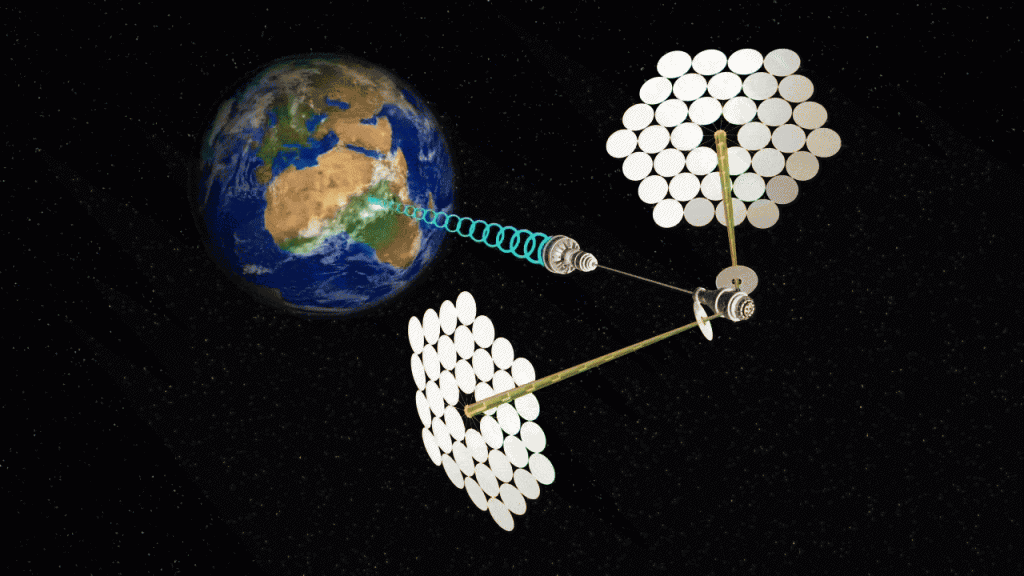The world needs to find different sources of clean energy. Space solar energy collects energy from the sunlight in space and transmits it wirelessly to the Earth. Space Solar Power can solve our energy and greenhouse gas emissions problems. Not only help, do not just take a step in the right direction, but rather resolve. Space solar power can provide large amounts of energy to everyone on Earth with very little environmental impact. Solar energy available in space is literally billions more times that we use today. Sun’s lifetime is estimated at 4-5 billion years, from which solar energy actually makes long-term energy solutions. Since the Earth receives only one part in 2.3 billion of Sun’s production, space solar energy is the largest potential energy source available till now, all of which are combined. Solar energy is used regularly on almost all spacecraft regularly. On a large scale, this technology, together with the already displayed wireless power transmission, can supply almost all the electrical needs of the planet.
There is another need to go away from fossil fuels for our transport system. While electricity today gives power to some vehicles, hybrids will soon develop into plug-in hybrids that can use electrical power from the grid. Since batteries, super-capacitors and fuel cells improve, the gasoline engine will gradually play a small role in transport – but only when we can generate large amounts of electrical energy. It does not help to remove fossil fuels from vehicles if you simply wander around to generate electricity to power the vehicles and use fossil fuels. Space solar power can provide the necessary clean energy for any future electric transport system. Although all viable energy options should be pursued with power, space has many important advantages over other energy sources of solar energy.
Benefits of Space Solar Energy
- Unlike oil, gas, ethanol, and coal plants, space solar energy does not release greenhouse gases.
- Contrary to coal and nuclear plants, space solar energy does not compete or depend on the rare freshwater resources.
- Unlike bio-ethanol or bio-diesel, space solar energy does not compete for rapidly valuable agricultural land or is not dependent on natural gas-derived fertilizers.
- Foods can continue to export a major rather than a fuel provider.
- Unlike nuclear power plants, space solar power will not produce hazardous waste, which needs to be stored and preserved for hundreds of years.
- Unlike terrestrial solar and wind power plants, space solar energy is available 24 hours a day, 7 days a week, in large quantities. It works in spite of cloud cover, daylight, or wind speed.
- Unlike nuclear power plants, space solar power does not provide easy targets for terrorists.
- Contrary to coal and nuclear fuel, space solar energy does not require environmental problem-related mining operations.
- Space solar power will provide true energy independence for those nations who develop it, eliminate a major source of national competitiveness for limited Earth-based energy resources.
- To meet the energy requirements of space solar energy, dependence on volatile or hostile foreign oil providers will not be required, which helps us to expand resources in other ways.
- Space solar power can be exported to virtually anywhere in the world, and its energy can be converted to local needs – such as the construction of methanol for use in places like rural India where there is no electric power grid.
- Space solar energy can also be used for the extinction of sea water.
- Space Solar Energy can take advantage of our current and historical investment in aerospace expertise to expand employment opportunities in solving difficult problems of energy security and climate change.
- Space Solar Energy can provide sufficient market for developing a low cost space transport system required for a deployment. In turn, the resources of solar energy will also be brought within economic reach.
Loss of space solar energy
- High development cost. Yes, the cost of solar energy development will be very large, although the US military presence in the Persian Gulf is much smaller than the cost of global warming, climate change or carbon sequence. The cost of solar energy development should always be compared to the cost of developing solar energy.

